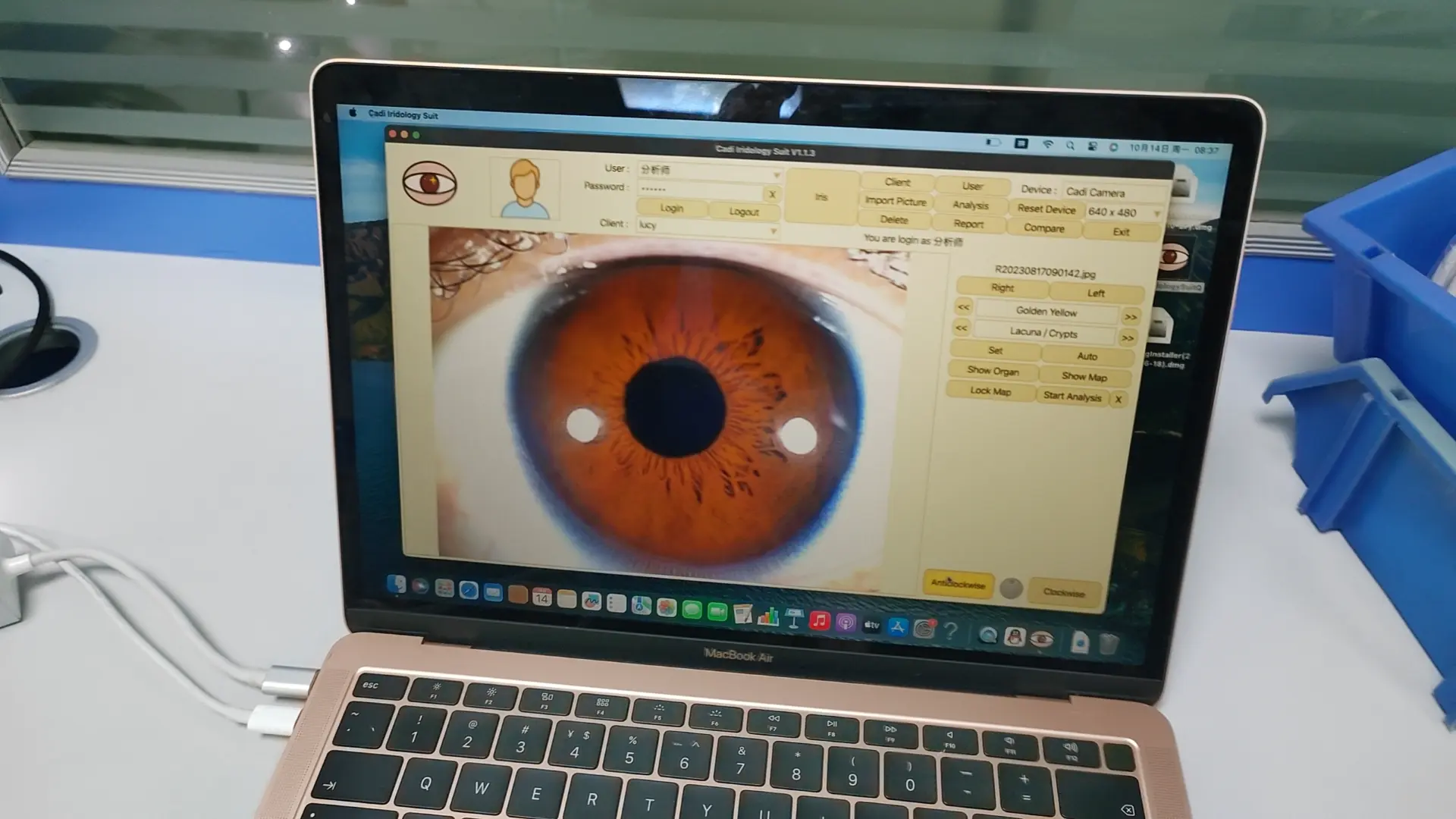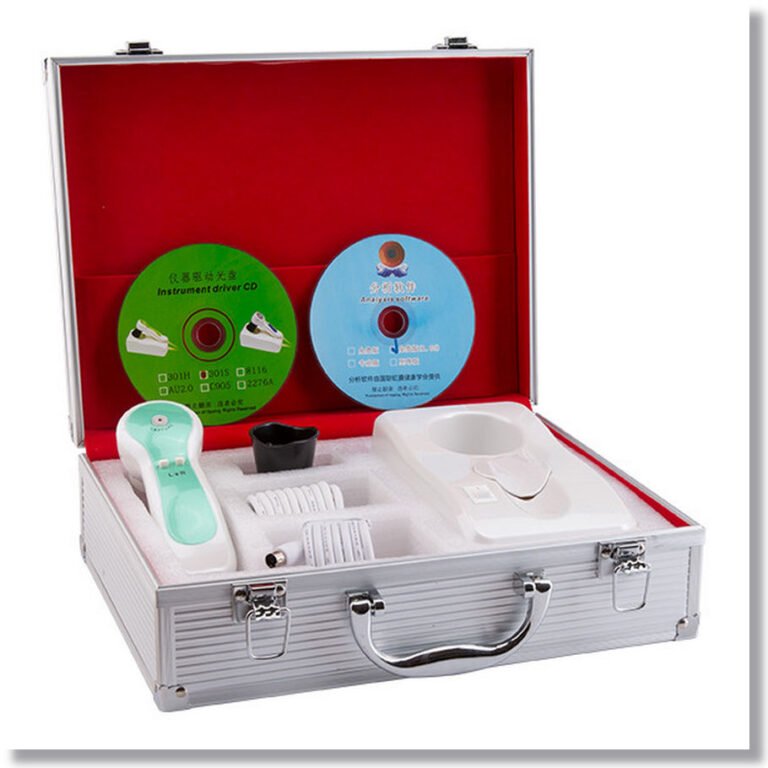Natural Therapy which Studies the Iris to Reflect Human Health and Susceptibility to Disease. Color Eye Charts, Map, History
The study of Iridology asserts that through studying markings in the iris one can learn about the inner workings of the body.
The word “iris” is Greek and means “rainbow” يا مان “halo.” The iris is the colorful portion of the eye that surrounds the pupil.
Every fiber, color, pattern, and defect in the iris is believed to have a reflex correlation with a disease manifestation or organ system malfunction. By studying the eye, Iridologists can reveal a patient’s overall state of health, as well as their tendencies toward inherited disease and possible future problems.
The left eye is believed to correspond with the left side of the body and the right eye with the right side of the body. In general, the higher organs (brain, thyroid) are at the top of the iris and the lower organs (kidneys) are at the bottom.
Iridology is used as more of a diagnostic tool than a treatment. It is not a medical exam or a definitive diagnosis of disease. Rather, it proposes to recognize:
* Toxins and their locations
* Stages of Inflammation
* Inherent Weakness or Strength
* General Health level
* Biochemical Deficiencies

In reading the iris to gain insight to the body there are several characteristics that are studied. These include, but are not limited to layers, colors, rings and spots.
Layers
A primary theory of Iridology is that the iris is constructed in layers that represent the four stages of tissue activity.
* Acute changes
* Sub-acute changes
* Chronic changes
* Degenerative changes
COLORS
There are 3 main physical eye types:
● Blue-Eyed Type (Lymphatic): At increased risk for problems with the upper respiratory tract, digestive tract, urogenital tract, lymphatic tissues, joints, kidneys and adrenal gland imbalances.
● Mixed-Eye Type (Biliary): This type has discolorations (usually light brown) on top of a blue background. They are at increased risk for liver related problems, digestive tract problems and allergies.
● Brown-Eyed Type (Hematogenic): This type is predisposed to blood disorders and imbalances of minerals, especially calcium. This type should pay attention to the circulatory system, liver, spleen, bone marrow, digestive system and endocrine glands.
Colors over certain areas on the iris correspond to the area of the body as indicated by the maps. You can then decide what types of changes are occurring.
* White indicates an area of the body working hard to “maintain.”
* Yellow-white indicates an area of the body losing a battle.
* Yellow indicates poor kidney function; yellow sclera (white part of the eye) suggest gallbladder disease.
* Orange indicates problems metabolizing carbohydrates and weakness in the liver and/or pancreas. Glucose levels should be checked.
* Red-brown indicates deterioration.
* Brown indicates poor liver function and “dirty blood.”
* Black indicates dying tissue.
RINGS
There are numerous rings seen in the iris. Here are a few of the main ones.
* اسڪراف رم يا انگوٽ جو انگوزي آئيس جي چوڌاري هڪ اونداهي بينڊ آهي، اهو ظاهر ڪري ٿو ته چمڙي صحيح نموني ڪم نه ڪري رهيو آهي. اهي ماڻهو آسانيء سان پسڻ نٿا ڏين (deatoxification جو فقدان)، وڌا پيداوار ۽ گردن جو دٻاء وڌي ويو آهي. اهي آهن “ٿلهي چمڙي وارو” جذباتي طور تي.
* زور ڀرڻ يا آزادي جا حلقا وڻ تي ترقي وانگر نظر اچن ٿا. اهي نيورو عضلاتي ٽينشن ۽ دٻاء کي ظاهر ڪن ٿا. اهي ماڻهو تڪميل ڪندڙ آهن ۽ انتهائي فعال ۽ ڪامياب آهن.
* عزم جو لپڊ انگوزي يا انگوزي جو انگوزي جزوي انگوزي يا مڪمل طور تي آئيس جي ٻاهرين ڪنڊ کي covering ڪيندي آهي. هي انگوزي گهڻو ڪري پراڻن ماڻهن ۾ مليل آهي، ۽ اهو آرٽيڪلساسڪلسس ۽ ٻين دل جي مسئلن جو اشارو آهي. اهو پڻ جگر ۽ ٽيرايئر سان گڏ مسئلن کي به ظاهر ڪري سگهي ٿو، ۽ پارڪسنسن جي بيماري جو وڌندڙ خطرو. اهي ماڻهون ضد بنجن ٿا.
* ليمفيٽڪ روسري يا رنگن جي انگوٽر ٻاهرين آئرس جي چوڌاري بادل جي نن d ڙي انگن وانگر نظر اچي ٿي. انهن ماڻهن وٽ ليمفيٽڪ شفقت ۽ سوجن ليمف نوڊس آهن. شايد هن انگوٽ سان هن انگوزي سان گڏ خاص ورزش حاصل نه ڪري رهي آهي. اهي ماڻهو ٻين کي اندروني ڪن ٿا’ هر شي کي نقصان ڏيڻ لاء مسئلا، جيئن انهن جي ماحول ۾ تڪرار ۽ تڪرار کي ناپسند ڪيو.































